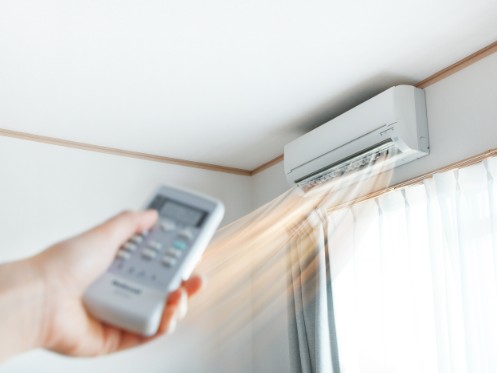In recent years, mini-split air conditioning systems have gained significant traction for their convenience, versatility, and energy-saving potential. But with energy prices soaring, many homeowners are asking the same critical question: Are mini-splits energy efficient? To answer this question, we’ve compiled an insightful guide on mini-split energy efficiency.
What Are Mini-Splits?
In contrast to conventional HVAC systems, which rely on a central unit and a duct network for air distribution across a structure, mini-split systems are made up of two primary parts: an exterior compressor unit and one or multiple interior air handlers. The outdoor compressor unit is responsible for heating or cooling the refrigerant. This compressed refrigerant is then circulated to the indoor units through a series of insulated pipes. The indoor air-handling units are strategically placed in different zones or rooms within a building, and they directly deliver conditioned air into these spaces.
A big plus of mini-split systems is that you can connect many indoor units to just one outdoor unit, and each indoor unit can be controlled independently. This means you can set different temperatures in different rooms based on individual comfort needs.
Traditional HVAC vs. Mini-Split Systems
Traditional HVAC systems, while effective, often suffer from energy losses due to the ductwork. Between 25% and 40% of energy may go to waste because of issues like duct leaks, gaps, or subpar connections. Mini-splits eliminate this problem by doing away with ducts altogether. This allows almost 100% of the energy consumed to be directly applied to cooling or heating.
Factors That Affect Energy Efficiency in Mini-Splits
SEER and HSPF Ratings
When considering the energy efficiency of a mini-split system, there are two ratings to consider. The first metric to look at is the seasonal energy efficiency ratio (SEER). Higher SEER ratings indicate better energy efficiency, often surpassing traditional HVAC systems. The federal minimum for SEER ratings is around 14, but many mini-splits on the market boast ratings above 15.
The heating seasonal performance factor (HSPF) is another critical metric focusing on the system’s heating efficiency during the colder months. Like SEER, higher HSPF ratings equate to better energy efficiency. Mini-splits with higher HSPF ratings will consume less energy to produce adequate heat, lowering your energy bills during winter.
Inverter Technology
Inverter technology is an innovation that has significantly enhanced the energy efficiency of mini-split systems. Traditional air conditioners and heat pumps operate by turning the compressor on and off entirely, leading to fluctuations in temperature and higher energy consumption. In contrast, inverter technology allows the compressor to operate at variable speeds. This means the system can adapt its output to the actual cooling or heating needs at any given moment, thus reducing energy wastage. This adaptive functioning provided by inverter technology also enables the mini-split system to maintain a more consistent indoor temperature without placing more stress on different parts/components of the unit.
Size and Installation
Choosing the correct size for your mini-split system is crucial for its efficiency. A system that is too large will cool or heat the room quickly but may result in inefficient operation and higher energy bills. On the other hand, a system that is too small will struggle to reach the desired temperature, running continuously and consuming more energy. Therefore, proper sizing, often best determined by a qualified technician, is essential for optimal performance and energy savings.
Installation is also critical in determining a mini-split system’s energy efficiency. Incorrect installation can lead to refrigerant leaks, poor air distribution, and other issues that negatively impact the system’s efficiency. We highly recommend having a certified technician install your mini-split system. Doing so will not only ensure that the system operates at its peak efficiency but will also maintain the manufacturer’s warranty, providing you with peace of mind in the long run.
Are Mini-Splits Only Suitable for Small Spaces?
One widely held misconception is that mini-split systems are only effective in smaller rooms or homes. While it’s true that their compact size makes them an ideal choice for cooling or heating small spaces, modern mini-splits are quite versatile. As mentioned earlier, advanced systems often allow multiple indoor units to be connected to one outdoor unit, offering individualized climate control for different rooms. This “multi-zone” capability makes mini-splits a viable option for larger homes and spaces where varied temperature settings are desired, debunking the notion that they are limited to smaller applications.
Start Saving on Your Monthly Energy Bills With Mini-Splits Today
If you’re considering installing a ductless AC system in your home, reach out to Bernard Heating & Cooling for a professional consultation. We also offer heating repairs, AC tune-ups, water heater replacement, and indoor air quality solutions, like dehumidifiers and air purifiers. Call Bernard Heating & Cooling in Hudson now to start your journey toward a more energy-efficient home!




